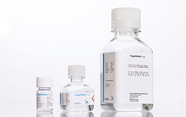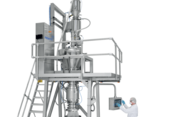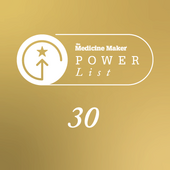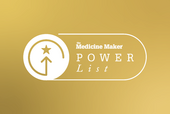Pharma Braces for Economic Downturn
We ask an analyst how pharma companies can weather the volatile economic environment and the Trump administration’s tariffs.
| 4 min read | Interview

The Trump administration has sent shockwaves through the global economy. Changing announcements about tariffs has led to a sharp decline in global markets. Major indices like the FTSE 100 experienced a downturn, US stock futures plummeted, and Asian currencies, such as the South Korean won, suffered significant losses.
In pharma, proposed tariffs on imported medicines and ingredients have raised concerns about potential price increases, impacting healthcare costs and accessibility for patients. The uncertainty surrounding these tariffs and their potential long-term consequences has created a sense of unease among investors, businesses, and policymakers alike, as they grapple with the potential fallout of this escalating trade conflict. Kate Leaman, chief market analyst at AvaTrade, discusses the potential impacts on pharma, and what stakeholders can do to protect innovative assets.
How significant is the risk of stagflation resulting from these tariffs, and what indicators are you watching most closely to gauge this possibility?
The risk of stagflation is no longer just academic, it’s meaningful. Economists now peg the chance of stagflation in 2025–2026 at 15-20 percent. That might sound like a hedge, but in macroeconomic terms, it’s significant enough to change boardroom strategies.
Several key indicators are painting quite a worrisome picture. Consumer drug prices have climbed 4.8 percent over the past year, GDP projections for Q1 2025 hint at contraction, and unemployment claims in trade-exposed sectors are ticking upward. Perhaps most telling is the University of Michigan's consumer confidence index, which just posted a 12-point drop – a steep signal of rising public unease. Put it all together and you get a macro-environment that feels tense, unpredictable, and potentially stagflationary.
With pharmaceutical imports facing proposed “major” tariffs, what sort of long-term restructuring do you anticipate within the global drug manufacturing landscape?
What we’re witnessing is the start of a structural realignment – less dramatic than reshoring everything, but more impactful than minor tweaks. Three major trends are forming the backbone of this shift. First, supply chain regionalization is gaining traction: North American firms are increasing API production in Mexico, while European CMOs are scaling up biologics capacity.
Second, we’re seeing vertical disintegration, with many of the top 20 pharma companies now outsourcing increasing amounts of their manufacturing. That trend is likely to deepen as firms chase flexibility and cost control. Finally, companies are narrowing their focus, prioritizing high-margin biologics, which now dominate the development pipeline. It’s a leaner, faster, more regionally diverse pharma ecosystem in the making.
Given that pharmaceutical companies often rely on complex global supply chains, how feasible is it for them to relocate manufacturing in response to these tariffs?
It’s feasible, but not quick. Relocation depends heavily on the type of product. Generic drugs could be shifted in as little as 6-12 months, but innovative small molecules might take 18-24 months, and biologics could stretch to 3-5 years because of regulatory and technical complexity. Challenges range from API sourcing and facility validation to finding skilled labour and reapproval processes. For these reasons, most companies aren’t choosing between Asia or North America, they’re building hybrid models. Many firms are maintaining their Asian supply base while developing finishing capabilities closer to home. This dual-track approach offers flexibility in the face of uncertainty without exposing the business to single-region risk.
Do you anticipate increased political or regulatory pressure on pharmaceutical firms to localise production or absorb some of the costs?
Absolutely – and it’s already happening. Politicians are watching rising drug prices closely, and pressure is coming from all angles: twelve US states are pushing legislation that would force companies to disclose import costs; the FDA is revisiting the once-rare idea of compulsory licensing for critical drugs under emergency powers; and in Washington, there’s talk of tying R&D tax credits to domestic production commitments. Combined, these efforts are nudging – if not pushing – pharma firms toward greater transparency and domestic investment. Firms may be forced to either localise or find creative ways to shield consumers from higher prices, or risk reputational and regulatory fallout.
If recessionary pressure mounts, what would you advise pharma stakeholders to do to protect the progress of advanced medicines?
Resilience planning starts now. If recession looms, the key is to protect the innovation pipeline without bleeding cash. First, stress-test supply chains – map out vulnerabilities beyond tier-one suppliers and consider tools like blockchain for real-time visibility. Keep a 90-day API buffer for essential therapies.
Form strategic alliances, even with competitors. Pfizer and Moderna’s mRNA collaboration set a precedent: sometimes, shared infrastructure is the smartest play.
Also, streamline portfolios. Historically, firms cut R&D assets during recessions. It is better to do this proactively than under duress.
Finally, hedge regulatory risk by filing in multiple regions simultaneously and pursuing WHO prequalification for key vaccines. That strategy preserves optionality and global market access, even as domestic landscapes shift.



















